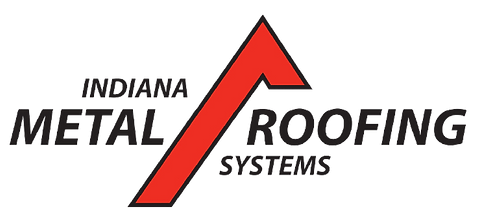The Benefits of a Green Roof: Enhancing Energy Efficiency and Aesthetics
- Joseph Justice
- Dec 5, 2024
- 4 min read
Green roofs have gained popularity for their numerous advantages, from improving energy efficiency to enhancing a home's curb appeal. At Indiana Metal Roofing Systems, we specialize in creating green roofing solutions that help homeowners reduce energy costs while boosting the aesthetic value of their homes. Below, we explore the key benefits of installing a green roof and why it’s a smart choice for modern homeowners.

What is a Green Roof?
A green roof, also known as a vegetative roof, is a roofing system that incorporates plants and soil on its surface. These roofs are either created using pre-fabricated trays or by planting vegetation directly into the roofing materials. Green roofs are designed to provide insulation, reduce stormwater runoff, and contribute to urban ecology by creating habitats for wildlife.
They are also a great option for homeowners looking to improve both the performance and appearance of their homes. Additionally, green roofs have been found to lower temperatures in urban areas, helping to mitigate the "urban heat island" effect.
Energy Efficiency and Cost Savings
One of the primary benefits of a green roof is its ability to improve energy efficiency. By adding layers of vegetation and soil, green roofs act as natural insulators, reducing the amount of heat absorbed by the building during the summer and retaining warmth during the winter. This leads to significant reductions in heating and cooling costs.
Green roofs can also manage stormwater effectively. They absorb up to 70% of rainwater, helping to reduce runoff and prevent flooding in urban areas. This dual function makes green roofs a valuable investment for homeowners seeking both environmental and financial benefits.
Aesthetic and Environmental Advantages
In addition to their energy-saving properties, green roofs offer aesthetic appeal. Green roofs enhance the visual appearance of homes, making them more attractive and increasing property values. Moreover, the presence of vegetation provides noise reduction from external sources like traffic.
Green roofs also have significant environmental impacts. They help improve air quality by filtering pollutants and absorbing carbon dioxide. Green roofs create habitats for birds and insects, supporting biodiversity in urban environments.
Types of Green Roofs
There are two main categories of green roofs: intensive and extensive.
Intensive Green Roofs: These have deeper soil layers and support larger plants, including trees and shrubs. Intensive roofs provide greater insulation and aesthetic value but require more maintenance.
Extensive Green Roofs: These are thinner, with shallow soil layers that support smaller plants such as grasses and sedums. They are easier to maintain and are more cost-effective, while still providing significant energy efficiency benefits.
For homeowners interested in a balance between the two, semi-extensive green roofs offer a middle ground, combining the benefits of both systems.
Cost Considerations
While green roofs can be more expensive to install than traditional roofing systems, the long-term savings on energy bills often offset these costs. Installation costs depend on factors such as the size of the roof, the type of vegetation used, and structural requirements.
Many local governments offer incentives for installing green roofs, further reducing the initial cost. Additionally, homeowners can expect a reduction in long-term maintenance expenses compared to traditional roofs, as green roofs provide natural protection against weather-related wear and tear.
Environmental Impact of Green Roofs
Green roofs contribute to environmental sustainability in several ways. By absorbing stormwater, they reduce the strain on urban sewer systems and help prevent flooding. Vegetation on green roofs also improves air quality by filtering pollutants and absorbing carbon dioxide.
Green roofs regulate building temperatures, reducing the need for air conditioning and helping to lower overall energy consumption. Moreover, green roofs support local ecosystems by providing habitats for birds, insects, and small animals in otherwise developed urban areas.
Did you know? Green roofs can reduce stormwater runoff by up to 70%, helping cities manage rainfall more effectively and reducing the risk of flooding.
Maintenance Requirements
While green roofs offer many benefits, they do require some maintenance to ensure long-term performance. Vegetation needs to be watered regularly, which can be done manually or with an automated drip system. Weeding and trimming are also necessary to maintain the health and appearance of the plants.
Soil amendments like fertilizers may be required periodically to keep the vegetation healthy. For intensive green roofs, professional landscaping services may be needed to manage larger plants and trees.
Conclusion
Green roofs offer a wide range of benefits, from enhancing a home’s energy efficiency to contributing to urban ecology. By reducing energy costs, improving air quality, and adding aesthetic value, green roofs are an excellent choice for environmentally conscious homeowners. At Indiana Metal Roofing Systems, we pride ourselves on providing top-tier green roofing solutions, backed by our A+ BBB rating and 5-star Google reviews. Our team ensures that every green roof installation meets the highest standards of quality and performance.
FAQs
1. How long does a green roof last?A well-maintained green roof can last up to 50 years, offering both durability and environmental benefits.
2. Are green roofs expensive?While the initial cost may be higher than traditional roofs, long-term savings on energy bills and maintenance often make green roofs a cost-effective choice.
3. Do green roofs require a lot of maintenance?Green roofs require regular watering, weeding, and trimming. However, they typically require less maintenance than traditional roofs in the long run.
4. How do green roofs help the environment?Green roofs improve air quality, reduce stormwater runoff, and create habitats for wildlife, contributing to urban biodiversity.
5. Can green roofs improve property value?Yes, the aesthetic appeal and energy efficiency of green roofs can increase property values.
Want to learn more about proper shingle installation? Check out our article on understanding the basics of flat roofing systems.


Comments